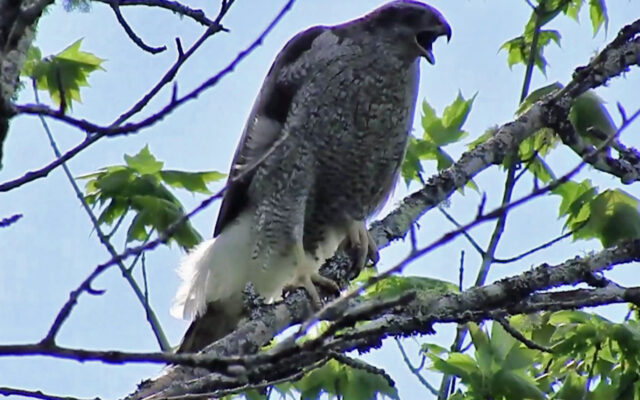
Maine’s lost wildlife: species that vanished or nearly disappeared
By Bob Duchesne
Maine looks different today than it did before Europeans arrived. Its wildlife has changed, with some species suffering heavily from hunting and habitat loss. In recognition of Indigenous Peoples’ Day, let’s explore these changes.
A few changes happened naturally, but most resulted from cultural differences between immigrants who began arriving 600 years ago and Native Americans, who have lived here for millennia.
Native peoples coexisted with nature. European settlers saw things differently: nature was to be subdued and bent to the will of those who could profit from it. Wildlife existed to be harvested by humans, and woe to any predator that competed with that harvest.
Overharvesting of game species and the elimination of predators were inevitable, almost expected — a classic example of the “tragedy of the commons.” This economic principle was understood during European settlement and has been around since at least Aristotle, more than 300 years before Christ. It holds that if everyone has equal access to a finite resource, those who take the most will benefit the most — until the resource is gone.
Wolverines lived in Maine prior to statehood but disappeared soon after. A bounty was placed on wolves in 1838, and they were extirpated within five decades. Maine loggers prized caribou meat; the last one was shot on Katahdin in 1908. The last known eastern cougar was shot in 1938.
Birds had it especially tough.
The great auk was the largest member of the puffin family. Like unrelated penguins, it was flightless and thus easy to hunt. The last known pair was shot on an island off the coast of Iceland on July 3, 1844.
The same fate befell Atlantic puffins. By the end of the 19th century, there was only one pair of Atlantic puffins left in Maine, nesting on Matinicus Rock. Not until the late 1970s did restoration efforts begin to bring them back.
The Labrador duck was the first species unique to North America to go extinct. Never very common, the last Canadian bird was shot on Grand Manan in 1874. The last American bird was reported in Elmira, New York, in 1878. Supposedly, it didn’t taste very good. It disappeared anyway.
Common eiders nearly followed the same path. They were prized for their feathers, and their eggs were easy to harvest. They teetered on extinction off the New England and Maritime Canada coastlines but recovered somewhat after hunting limits were enacted in the early 20th century.
Heath hens were once among the most abundant game birds in eastern North America, but they were easy to hunt. Throughout colonization, these small, chicken-like birds were hunted so heavily that household servants demanded they not be served heath hens more than two or three times a week. By 1850, all of Maine’s heath hens were gone. Today, none remain on the planet.
Likewise, Maine’s original population of wild turkeys was eliminated by the 1870s.
Birds disappeared across the country for similar reasons. The passenger pigeon was the most abundant bird in North America, numbering in the billions. Market hunters could harvest an entire tree full of roosting birds and carry them off to be sold for dinner in Boston and New York. By the turn of the 20th century, they were extinct.
Ivory-billed woodpeckers were already scarce in the 19th century, which made them valuable to collectors. Heavy logging in the river bottomlands of the American Southeast devastated the rest. The last known nesting pairs were found in the Singer Tract in Louisiana, but despite conservation efforts to protect the land, the trees were cut down in 1944.
And so it went. Attractive birds, including puffins, became fashion accessories for adornment on hats. Waterfowl and shorebirds, which migrate in large groups, were harvested with punt guns — enormous shotguns mounted on boats that could reap 50 birds at a time.
Hawk Mountain Sanctuary in Pennsylvania is famous for hawk migration along the ridgeline. Until the 1930s, hunters climbed the mountain to shoot raptors just for sport. At one point, there was even a $5 bounty for every goshawk killed. It was turned into a sanctuary in 1934.
Eventually, the wanton destruction of so much wildlife shocked Americans into action. Laws prohibited market hunting. Treaties protected migrating birds. In 1973, President Richard Nixon signed the Endangered Species Act.
History turned on its head: sportsmen and landowners became some of the strongest advocates for conservation.
Many of these protections are currently being rolled back in Washington. It seems we haven’t quite learned our lesson after all.